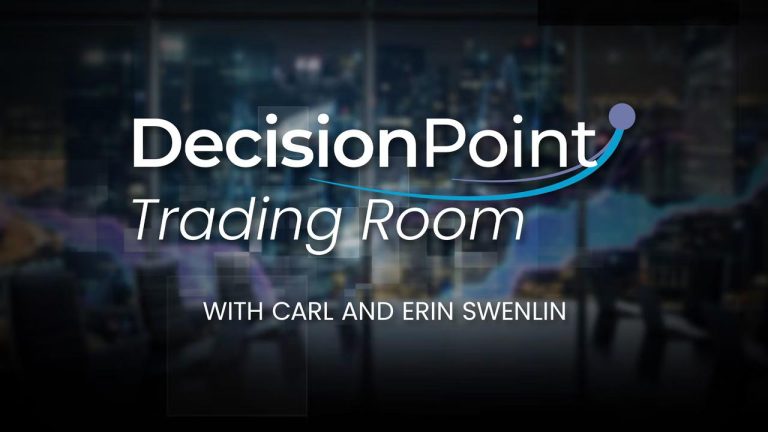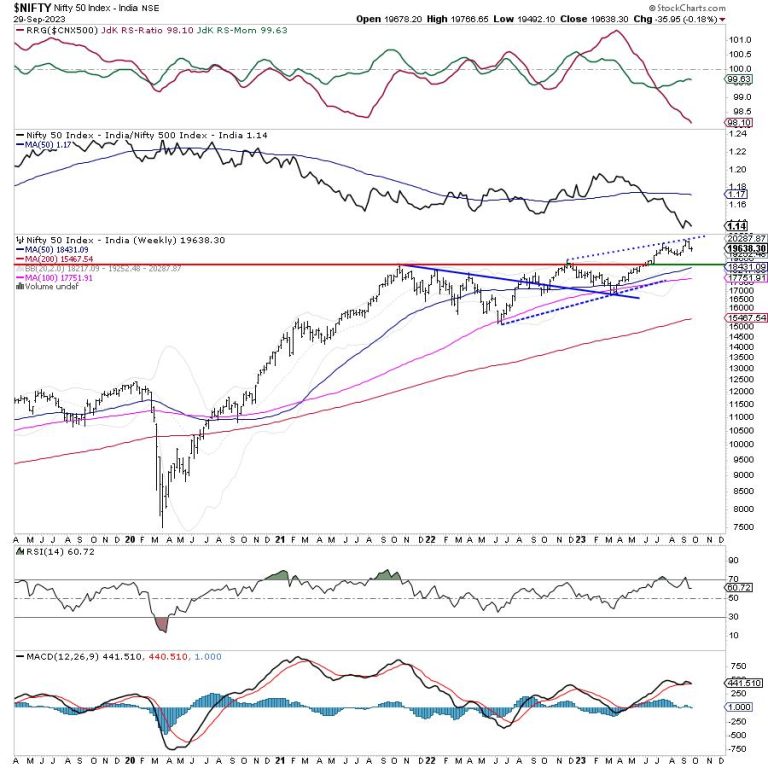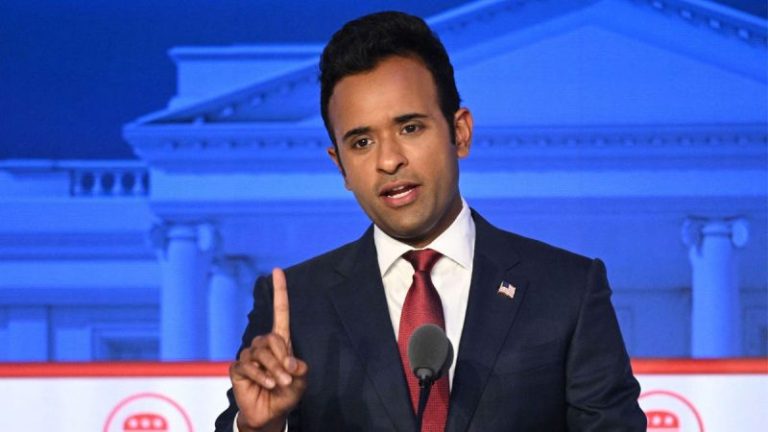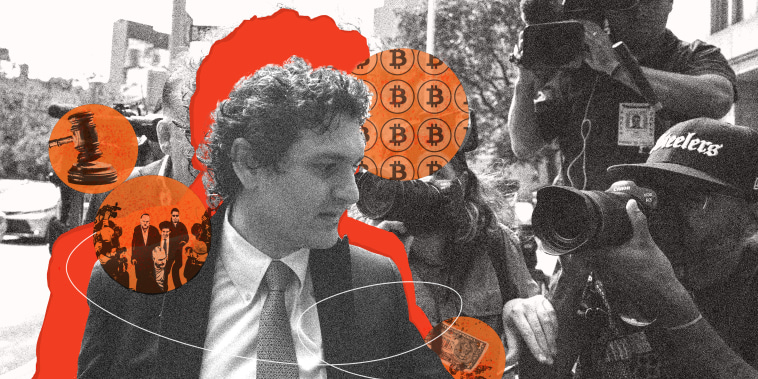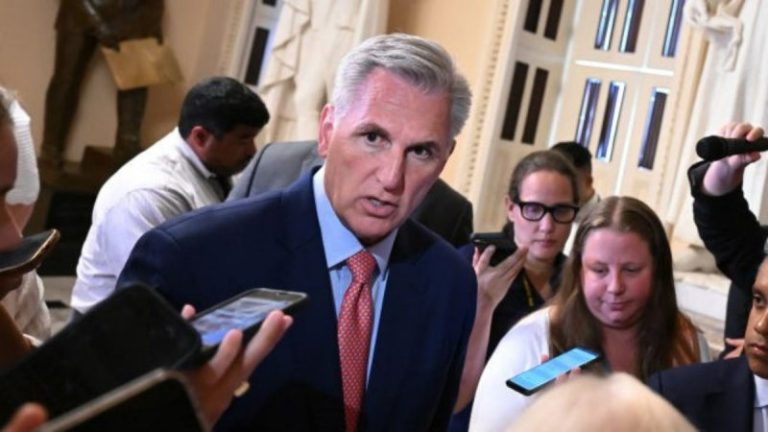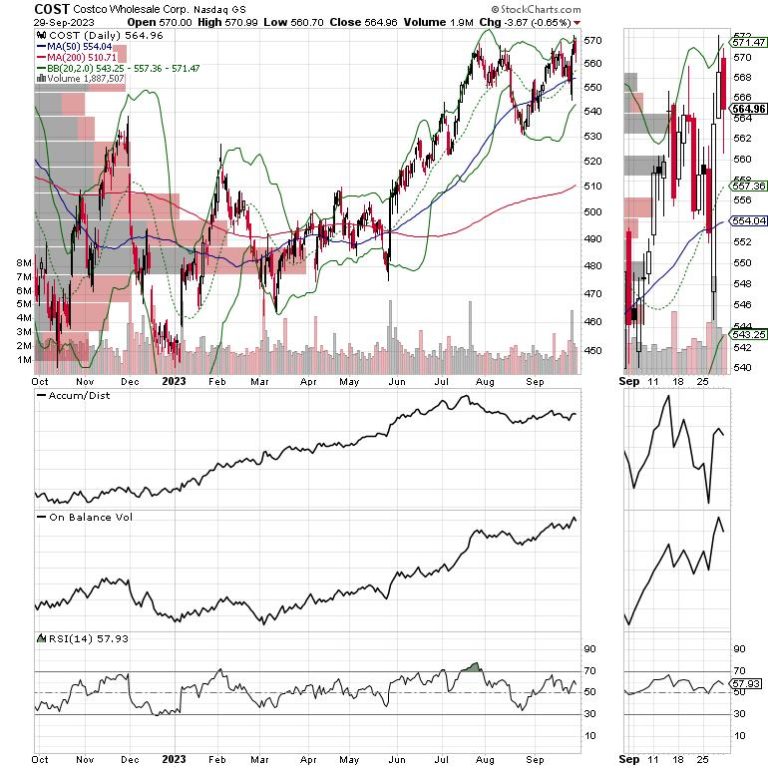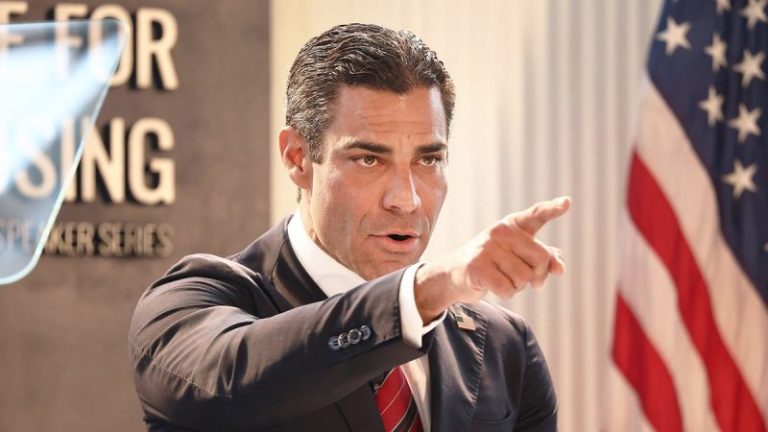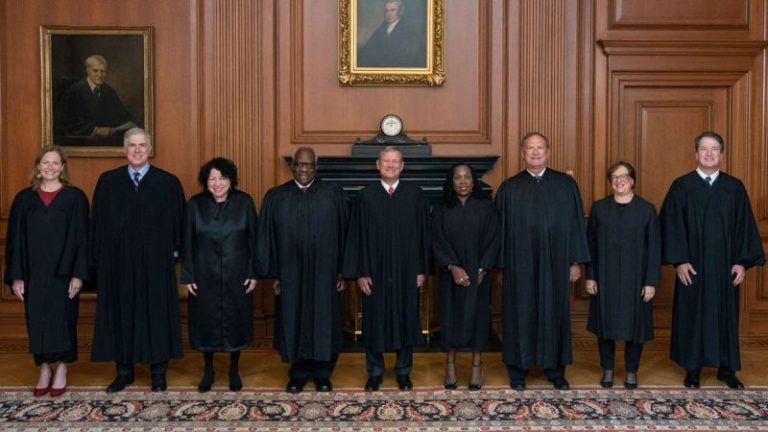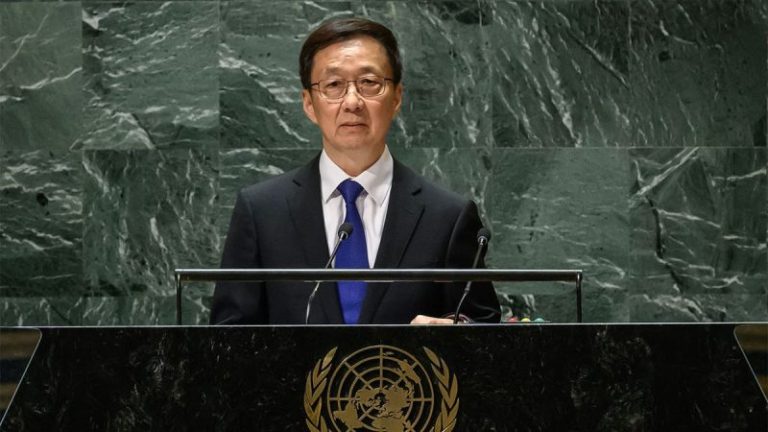As Americans look ahead to the 2024 presidential election, the Supreme Court is reaching back to past constitutional conflicts, just in time to have major political implications for voters to consider.
This judicial déjà vu will include not only the court’s hot-button caseload, but the nine members’ own conduct and accountability.
‘The Supreme Court is going to be tackling so many of the issues that have divided America on political grounds. They’re not shying away from the controversial cases,’ said Thomas Dupree, a former top Justice Department official who frequently litigates before the high court. ‘And any time the Supreme Court starts wading into these political issues, people react strongly. It’s already shaping up to be a blockbuster term.’
The term kicks off next week — the so-called ‘First Monday in October’— when public courtroom sessions will begin anew.
The argument docket includes:
Gun rights and whether those under domestic violence restraining orders can possess guns.The administrative state and separate appeals over curbing the power of the executive branch to interpret and enforce federal rules; and whether the Consumer Financial Protection Bureau will be effectively dismantled over its funding mechanismElection redistricting and a challenge to congressional seat boundaries in South Carolina, which could be a prelude to more voting fights, some possibly involving Donald TrumpA free speech dispute over state laws that would force social media platforms to host third-party communications and prevent them from blocking or removing users’ posts based on political viewpoints
And another high-profile appeal could soon be accepted for final review, dealing with Food and Drug Administration approval authority over the abortion pill mifepristone.
All of these petitions could be decided by mid-2024.
BENCH PRESSURE
But when it comes to public scrutiny of the court, the docket has become a benchwarmer of sorts to the justices themselves. A summer of revelations over questionable personal travel and growing calls for ethics reform have further divided them and lawmakers over whether anything can be done to police the highest court in the land, besides its nine members.
Some justices think it is time. New ethics rules would ‘go far in persuading other people that we were adhering to the highest standards of conduct,’ Justice Elena Kagan said last week at a Notre Dame Law School event. ‘I hope we can make progress.’
Justice Brett Kavanaugh a few weeks ago suggested his colleagues may take ‘concrete steps soon’ to deal with the rising calls for reform.
‘We can increase confidence. We’re working on that,’ he added.
In May, Chief Justice John Roberts said it was an ‘issue of concern.’
‘There’s really no reason why members of the Supreme Court should not also have a binding ethical code that applies to other federal judges,’ said Brianne Gorod, chief counsel at the Constitutional Accountability Center. ‘But if they don’t act soon, I think it would be entirely reasonable for Congress to consider whether it’s appropriate for them to take some action to ensure that the court is being held to the highest ethical standards.’
But other members of the court have pushed back recently over calls for greater transparency.
Justice Samuel Alito in a recent interview resisted such suggestions.
‘No provision in the Constitution gives [Congress] the authority to regulate the Supreme Court — period,’ he said.
In a separate court filing this month, Alito also rejected calls for him to recuse himself in an upcoming tax case as ‘unsound’ and that there was ‘no valid reason’ for him not to participate.
‘Recusal is a personal decision for each justice,’ he added.
David Rivkin, one of the lawyers in the appeal, co-authored recent articles published in The Wall Street Journal’s opinion section, which included exclusive interviews with the 73-year-old justice, including his comments on ethics. Senate Judiciary Committee Chairman Dick Durbin, D-Ill., had urged Alito to step aside, citing the appearance of a conflict of interest.
The Democrats’ effort comes after the nonprofit news organization ProPublica began reporting on the activity of Supreme Court justices, including revelations Alito had taken a luxury vacation in Alaska with a Republican donor who had business interests before the court.
Justices Sonia Sotomayor and Clarence Thomas have been embroiled over media reports about their book deals, travel and financial dealings.
The Senate Judiciary Committee in July advanced the Supreme Court Ethics, Recusal, and Transparency (SCERT) Act to the full Senate. The bill would require Supreme Court justices to adopt a code of conduct and create a mechanism to investigate any such alleged violations.
‘There’s definitely been a lot of internal debate in recent years among the justices themselves about whether they should adopt a binding ethics code,’ already applicable to other federal judges, says Dupree. ‘If so, what should be in that ethics code? And it wouldn’t surprise me if, in the next year or two, the Supreme Court does voluntarily adopt some sort of code along those lines.’
‘LEGITIMATE’ CONCERNS
Calls for greater openness also extend to the court caseload itself, especially its so-called ‘shadow’ or emergency docket, an abbreviated decision-making process that has accelerated in recent years. These are cases that are presented to the justices on a time-sensitive basis in its earliest stages, lacking the transparency and deliberation of a typical appeal.
While designed to be temporary in nature, they can have an immediate effect by blocking nationwide enforcement of a challenged law or policy on issues like immigration, pandemic restrictions and abortion access. These legal ‘applications’ typically lack full briefing, oral arguments or written opinion.
Just this week, the high court is being asked to decide whether the Biden administration can continue working with social media companies to block digital disinformation amid claims conservative viewpoints were being suppressed. An enforcement injunction would remain in place until the case is fully litigated, a process that could take years to resolve.
While some justices have criticized the increasing use of the shadow docket on high-profile disputes, Alito has said critics have mistakenly labeled its use as ‘sneaky,’ ‘sinister’ and ‘dangerous.’
‘And this portrayal feeds unprecedented efforts to intimidate the court or damage it as an independent institution,’ added Alito, who joined the court in 2006.
A Fox News poll from late June found just 48% had confidence in the Supreme Court as an institution. It is the first time that number has dropped below 50% since the question was originally asked in 2014. Three years ago, 68% had confidence in the court, 83% in 2017. This erosion crumbles across the political spectrum, down 48 points among Democrats, 21 among Republicans and 37 among independents since 2017.
‘Confidence in major institutions has been diminishing for a decade or more, but the loss of confidence in the Supreme Court is striking,’ says Democratic Pollster Chris Anderson, who conducts the Fox News Poll with Republican Daron Shaw. ‘With less than half of Americans confident in the court, and Democrats half as likely as Republicans to feel so, there is a clear perception the country lacks a non-political arbitrator of the laws of the land.’
Some progressives say that may be because the 6-3 conservative court seems overly eager to wade into controversial issues and overturn its own prior rulings.
The court last term prohibited affirmative action in college admissions; the term before, abortion rights from Roe v. Wade, concealed carry gun restrictions and clean-air standards were all tossed out, upsetting decades of Supreme Court precedent.
‘There have been times recently where there have been ideological divides with one side overturning precedent,’ Kagan said last week. ‘I’m hopeful that it won’t have that year after year, case after case — at least it shouldn’t.’
‘There is a real concern today that the Supreme Court is suffering from a legitimacy crisis because there is this sense that the decisions that the court reaches depend on the composition of the court rather than what the law is and what the law requires,’ said Gorod of the progressive Constitutional Accountability Center.
‘And with new ethical questions popping up every day, new stories about potential conflicts of interest involving the justices, I think, undermine the court’s credibility in the eyes of the American people. And that’s a really, really troubling thing.’
WHO DECIDES?
The wild cards for the Supreme Court heading into 2024 are possible last-minute challenges to election laws: redistricting, voter registration requirements, provisional ballots, early voting and more.
Some court watchers see the potential of another Bush v. Gore, the 2000 presidential election case in which the Supreme Court effectively settled who would sit in the White House.
And the wildest of wild cards — what is now just legal debate could soon turn into a monumental judicial debate over a provision in the Constitution’s 14th Amendment, disqualifying anyone from the presidency who ‘engaged in insurrection or rebellion.’
A lawsuit from Colorado voters seeks to keep Donald Trump off that state’s primary ballot over his role in the 2020 election interference.
For now, the Supreme Court appears content to do its job quietly, free as much as possible from outside interference. It may be wishful thinking.
‘There’s a storm around us in the political world and the world at large in America,’ Kavanaugh said this month. ‘We, as judges and the legal system, need to try to be a little more, I think, of the calm in the storm.’
Shannon Bream currently serves as anchor of FOX News Sunday. She joined the network in 2007 as a Washington D.C- based correspondent covering the Supreme Court. Her latest book is ‘The Love Stories of the Bible Speak.’
This post appeared first on FOX NEWS

